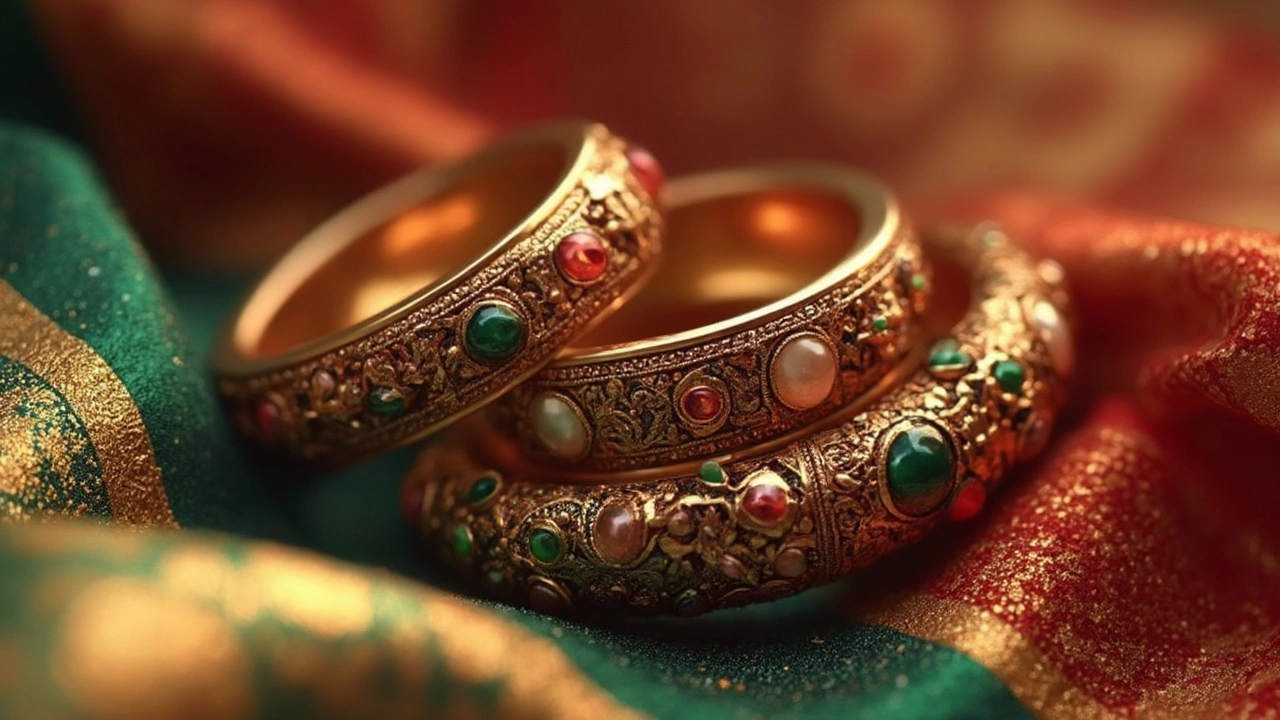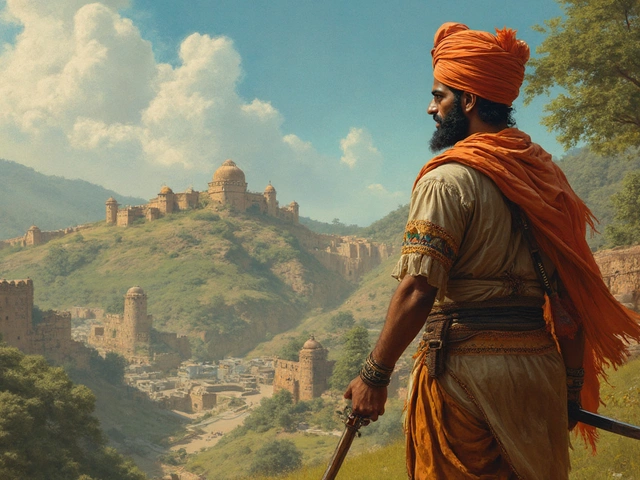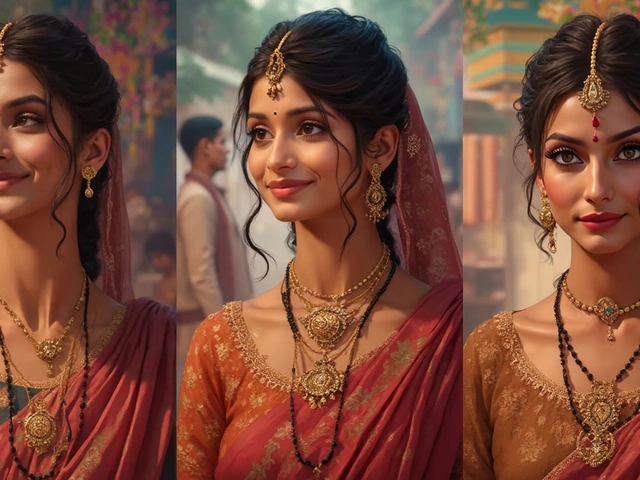India's tradition of bangles isn't just about looking pretty; it's a nuanced blend of history, culture, and personal expression. These colorful wrist ornaments, known as 'choodi' or 'kangan,' have been gracing the arms of women in the Indian subcontinent for thousands of years. But why exactly are they so important?
Bangles have a rich history dating back to ancient civilizations like the Indus Valley, where archaeological sites revealed terracotta bangles that fashionistas rocked even back then. Worn by women across different eras, these bangles have always spoken a silent language, conveying stories of prosperity, marital status, and even health. Most importantly, they're regarded as a symbol of good fortune.
It's fascinating how the tradition of wearing bangles has transcended time and trends, remaining a core part of Indian culture. Whether it's the chiming sound they make, considered auspicious in many parts, or the diverse styles seen in every corner of the country, bangles hold a special place in Indian hearts. So, what's your take on bangles now?
- The History of Bangles
- Cultural Significance
- Materials and Styles
- Bangles in Modern Times
- Choosing the Right Bangles
The History of Bangles
The journey of traditional bangles begins way back in the times of the Indus Valley Civilization. Archaeologists discovered bangles made from materials like terracotta, shell, and copper, dating back to around 2600 BC. These discoveries hint at the sophisticated artistry of that era. It's mind-blowing that something as simple as a bangle holds tales from over 4,500 years ago.
Bangles have been pivotal in Indian society through the ages. During the Mauryan and Gupta periods, around the 3rd century BCE, bangles evolved into more intricate designs, often made from glass, gold, and silver, catering to the preferences of the elite classes. The use of precious materials became a status symbol, emphasizing the wearer's wealth and class.
Symbolism Across Eras
As time marched on, bangles became more than just ornaments. In Hindu culture, married women wear glass bangles as part of their marital symbol, believing they bring prosperity and protect the husband. Widows traditionally remove their bangles, highlighting their significant cultural weight.
Not to be left out, other ancient cultures in India, like the Dravidians, used bangle designs that reflected their rich heritage. It's interesting to note how these pieces varied depending on the region, each with its own materials and styles, yet all sharing a common cultural thread.
Modern Excavations and Findings
Recent digs have even unearthed gold bangles from the Harappa site, hinting at the socio-economic structures of ancient times. Such finds offer tangible insights into how bangles were interwoven with daily life, trade, and societal standings.
Indian culture is steeped in tradition, and bangles have remained constant through the years. Whether made of priceless metals or humble bone, each bangle tells a part of the story of India's rich heritage.
Cultural Significance
In India, bangles are more than just pieces of jewelry; they reflect a vast cultural symbolism deeply interwoven into the everyday lives of women. One of the most well-known roles of traditional bangles is their significance in marriage. Widely viewed as symbols of marital joy and prosperity, newlywed brides often wear them as part of their wedding ensemble to signal the start of a new chapter.
The Color Code
The colors of bangles aren't picked randomly. They symbolize different things. Red bangles, for instance, are worn by brides and signify energy and prosperity. Green bangles are common among married women and are thought to bring about fertility and prosperity. Different regions in India have their own take on which colors are most auspicious, making each bangle style unique to its locale.Regional Traditions
When talking about India, it's essential to understand the regional diversity. In Punjab, for instance, you'll find 'chooda,' a set of red and ivory bangles traditionally worn by Sikh and Punjabi brides. Down south, 'Valayal' are bangles made of glass worn by Tamil brides as a part of their wedding rituals.Consequences of Bangle Breakage
Bangles are also believed to hold protective qualities. Breakage is often seen as a bad omen, especially for married women. This time-honored belief underscores the bangle’s role as more than just an accessory.All these factors collectively make Indian bangles a fascinating accessory that holds stories of tradition, local beliefs, and cultural pride.
| Bangle Types | Region | Symbolism |
|---|---|---|
| Chooda | Punjab | Marital Bliss |
| Valayal | Tamil Nadu | Wedding Rituals |
| Glass Bangles | Varies | Fertility and Prosperity |
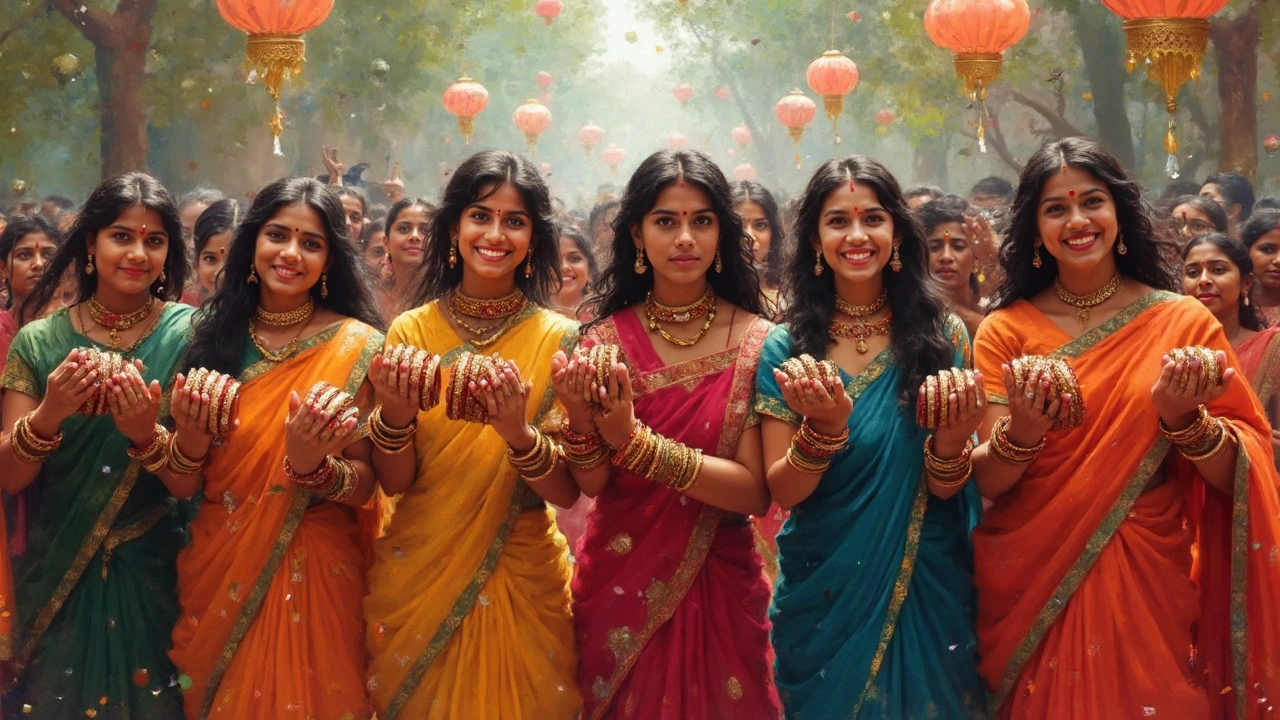
Materials and Styles
When it comes to traditional bangles in India, the variety is mind-blowing. These iconic pieces are crafted from many materials, each bringing its own flavor to the table. From simple glass bangles to intricate gold creations, there's something for every occasion and personal style.
Glass Bangles
Let's start with the all-time favorite: glass bangles. Known for their bright colors and musical clinking, these are staples in every Indian woman's jewelry box. You'll often see them in vibrant reds, greens, and blues, especially in markets and around festivals. Some believe they bring positive energy—and let's be honest, who wouldn't want a little extra positivity?
Metal Bangles
Next, we've got metal bangles, often crafted from gold, silver, or even copper and brass. The gold ones? They're usually the go-to for weddings and special events. A gold bangle could also be an investment piece handed down through generations, balancing beauty and monetary value.
Lac and Brass
Don't overlook lac bangles, which have been gaining popularity for their colorful designs and environmentally friendly production. Lac is a natural resin, used to create exquisite patterns, sometimes embellished with mirrors or stones. In contrast, brass bangles, often seen in Rajasthan, pack a punch with their intricate carvings and rustic charm.
Silk Thread and Wooden Bangles
Silk thread bangles, wrapped carefully to create a smooth, pleasant finish, come in all the colors of the rainbow. Perfect for adding a soft touch to a formal outfit. Then there are wooden bangles, which offer a unique, earthy vibe, often featuring hand-painted designs or carved figures that bring them to life.
Each material speaks a different language of fashion and culture, making bangle history even richer. Whether you prefer simple glass or luxurious gold, the choice depends on occasion, style, and sometimes, even mood. How about trying on a few next time you're out shopping?
Bangles in Modern Times
In today's world, traditional bangles are constantly evolving, blending seamlessly with modern fashion trends while still holding on to their cultural roots. The vibrant colors and intricate designs make them irresistible, not just in India but globally. Celebrities and fashion icons often sport bangles, introducing them to an audience beyond cultural boundaries.
The modern bangle market is a dynamic mix of traditional craftsmanship and contemporary design. Designers experiment with materials like plastic, wood, and even recycled products to cater to eco-conscious consumers. These aren't your grandma's bangles anymore; they're accessories for the modern woman.
Function Meets Style
Functionality is now a key part of bangle design. Some modern bangles come with embedded technology like fitness trackers or act as wallets with RFID chips. It's all about merging the old and new.
Global Impact and Trends
Even beyond India, the appeal of bangles is rising. They’re seen on international runways, often paired with Western outfits for a trendy East-meets-West look. During cultural events, Indian women living abroad wear them to reconnect with their roots.
Social media also plays a huge role in popularizing bangles. Platforms like Instagram and TikTok showcase tutorials on how to style bangles with Western and Indian outfits alike, proving just how versatile these traditional bangles can be.
Bangles and Sustainability
Sustainability is more than just a buzzword now. Some bangle makers are moving towards sustainable practices, using ethically sourced materials, and fair trade manufacturing. This shift not only preserves the planet but also ensures artisans receive fair wages for their work.
With an increasing awareness of global issues, consumers are demanding transparency. Brands that showcase their commitment to sustainability often attract more customers and build brand loyalty.
Whether worn for tradition or fashion, bangles in modern times embody a blend of beauty, culture, and innovation, making them more relevant than ever.
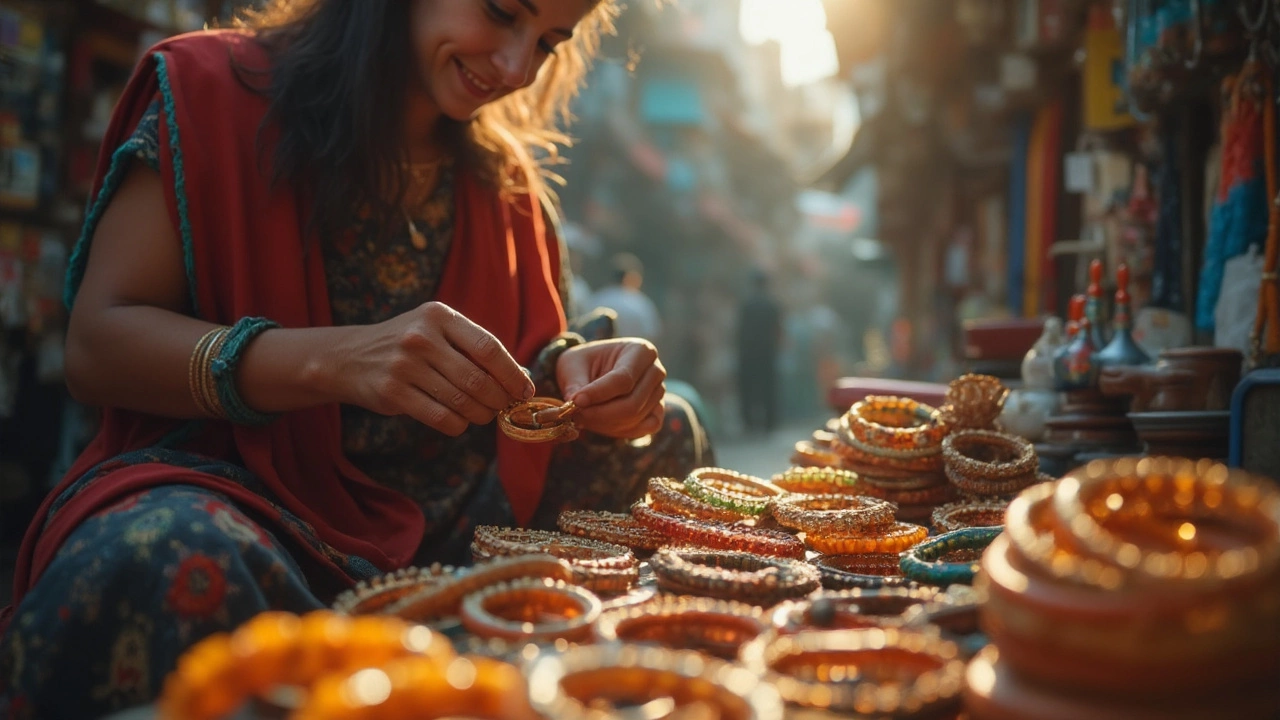
Choosing the Right Bangles
Choosing the perfect traditional bangles in India might seem daunting with the endless variety available out there. But don't sweat it; I'm here to help you find what suits you best.
The Material Matters
Bangles come in various materials like glass, gold, silver, lac, and even wood. Glass bangles are a favorite for their distinct sound and vibrant colors, but they can be fragile. Gold and silver bangles, often passed down through generations, are not just precious but durable and can go with practically anything. If you're looking for something lighter, lac bangles with their rich patterns might be your style.
Picking the Right Size
Whether you're choosing bangles for daily wear or a special occasion, size is crucial. Too tight is uncomfortable; too loose and they won't stay in place. When trying them on, make sure they slide over your hand comfortably and sit snugly on your wrist without pinching.
Colours That Click
The spectrum of colors in Indian bangle tradition is mind-boggling. Bright reds and greens are popular choices for brides, symbolizing love and fertility. However, everyday wear can include a rainbow of colors to match your outfits or your mood.
Occasion and Tradition
Different occasions demand different types of bangles. For example, glass bangles are often worn during festivals due to their bright appeal. As quoted by fashion historian Ritu Sethi,
"Bangles are more than an accessory in India; they mark transitions and traditions, celebrating life's key milestones with style."Considering the event helps narrow down your options, making your choice a bit more straightforward.
- Weddings: Opt for heavier gold or silver bangles.
- Festivals: Bright, chunky glass bangles steal the spotlight.
- Everyday Wear: Mix and match for a playful look.
If you're still unsure, remember that selecting the right bangle is part art, part science. Pay attention to your personal comfort, style, and the traditions you want to celebrate. Now, armed with these tips, you're ready to delve into the dazzling world of bangles.
